The volunteers and I are back in the archaeology lab, and we continue to work on rehousing artifacts from On-A-Slant Village (32MO26) at Fort Abraham Lincoln State Park near Mandan (for more about On-A-Slant Village, see http://blog.statemuseum.nd.gov/blog/adventures-archaeology-collections-…). There are many boxes of ceramics from this site. We are enjoying the variety of quality, sizes, and designs. Traditionally, Mandan potters were women. Here are just a few examples of the pottery that they made. The pottery is found in a variety of sizes. There are a few small decorated vessels like these.
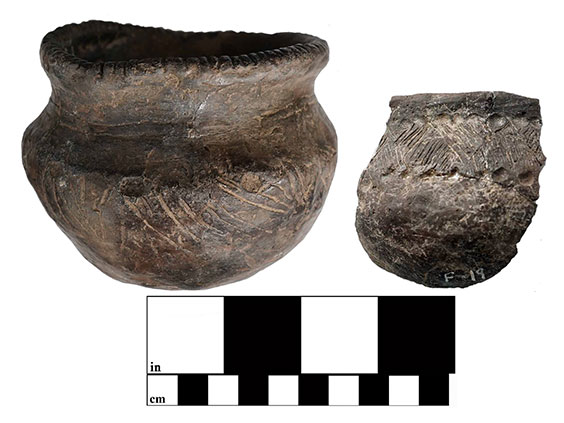
Incised lines and finger or tool impressions are visible on these small pots from On-A-Slant Village (83.442.6.2, 451; photo by David Nix)
There are also large pots like this.
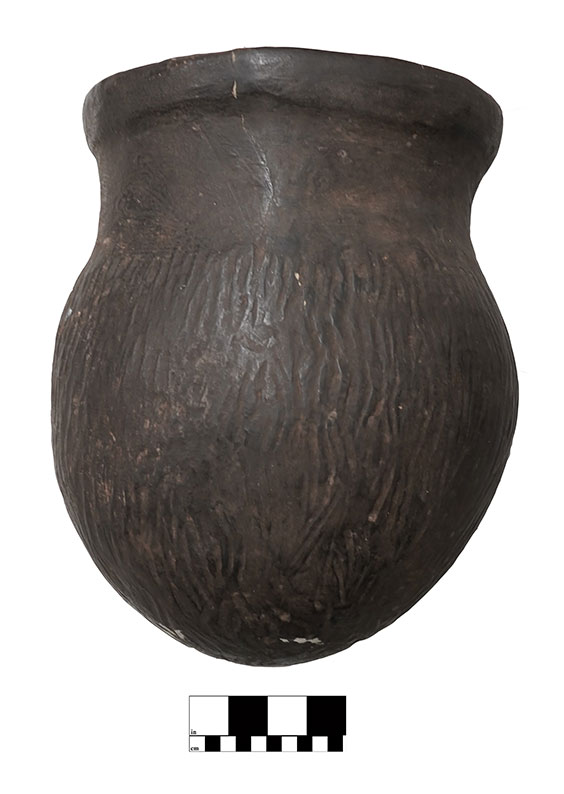
Incised lines and finger or tool impressions are visible on these small pots from On-A-Slant Village (83.442.6.2, 451; photo by David Nix)
This example is undecorated, but we know it was shaped using a paddle because you can see marks (called simple-stamping) on the body of the pot. There are many examples of simple-stamped sherds from On-A-Slant—here is a close-up of another simple-stamped sherd.
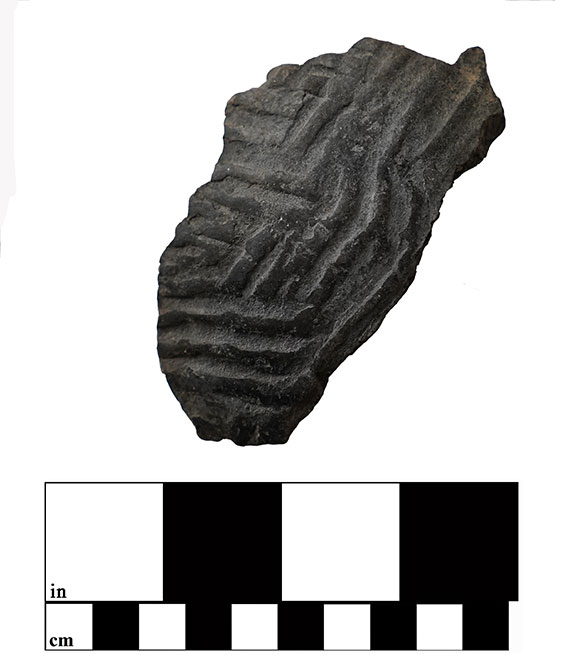
A simple-stamped body sherd from On-A-Slant Village (83.442.2.59; photo by David Nix)
The paddles used to shape the pots had grooves like these examples from our educational collection.
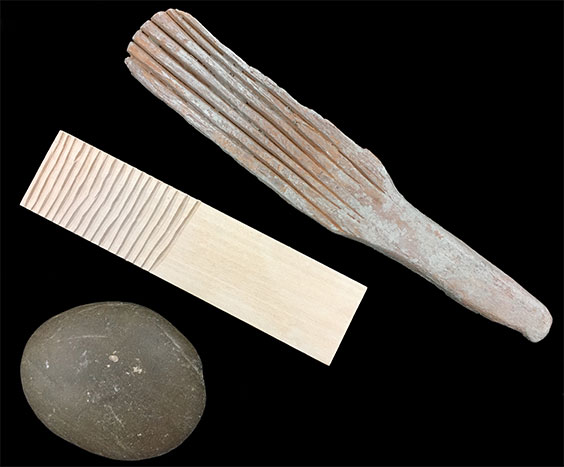
Replica pottery anvil stone and two replica simple-stamp paddles (SHSND AHP educational collection)
To shape the pot, the potter held a smooth stone (called an anvil) on the inside of the pot while she used the paddle on the outside of the pot.
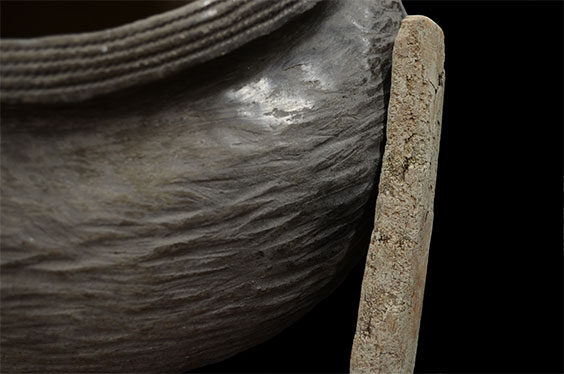
A replica pot and paddle tool (replica pot by Wade Haakenson, paddle from the SHSND AHP educational collection)
Much of the decorated pottery from On-A-Slant Village is decorated with cord impressions that come in a variety of patterns and designs.
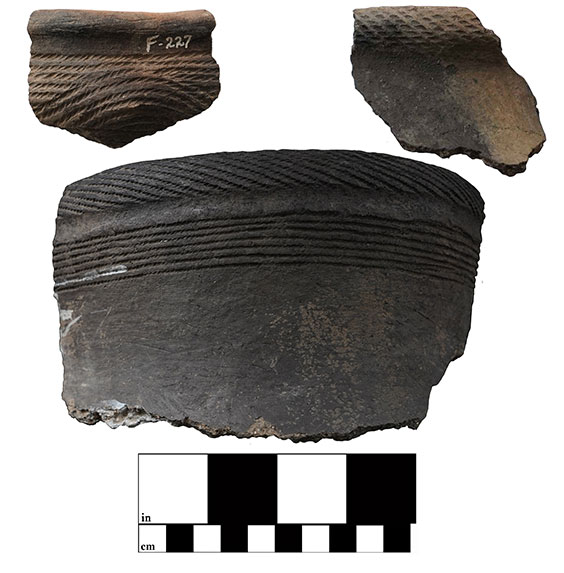
Cord impressed rim sherds from On-A-Slant Village (83.442.4.707, 1321, 807)
The potter used cords similar to these to decorate the pottery.
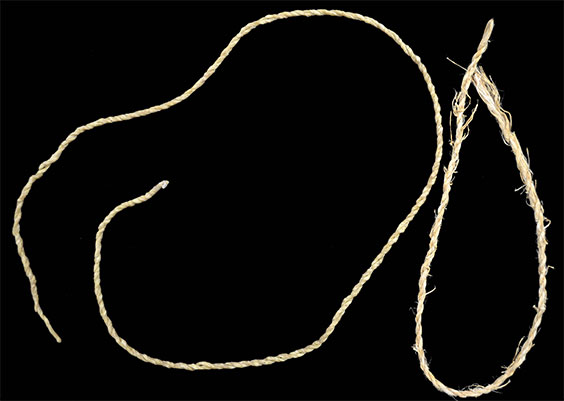
Replica cords – the one on the left is made from sinew, the one on the right is made from plant fiber (SHSND AHP educational collection)
There are also many sherds with incised or trailed designs.
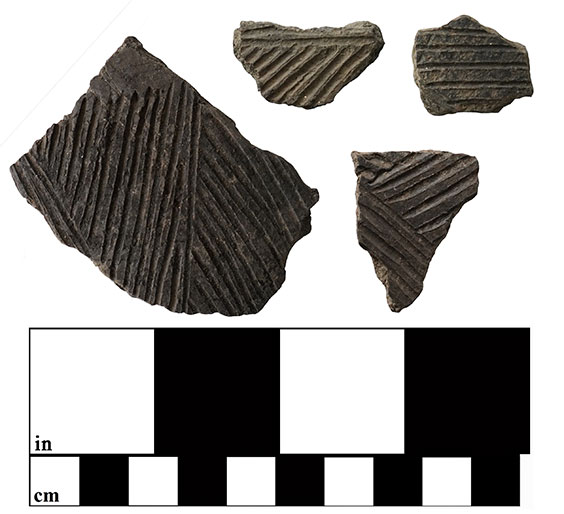
Incised sherds from On-A-Slant Village (83.442.2.123, 132, 133, 134; photos by David Nix)
A stick could be used as a tool, or it could be carved to create different kinds of lines in the clay.
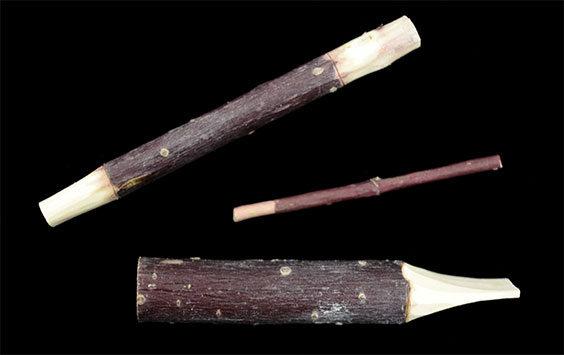
Stick tools (SHSND AHP educational collection)
Similar tools could be used to make impressions in the clay as well. My favorite kind of decorations are impressions made by cord-wrapped stick tools. These interesting tools make designs that look like this.
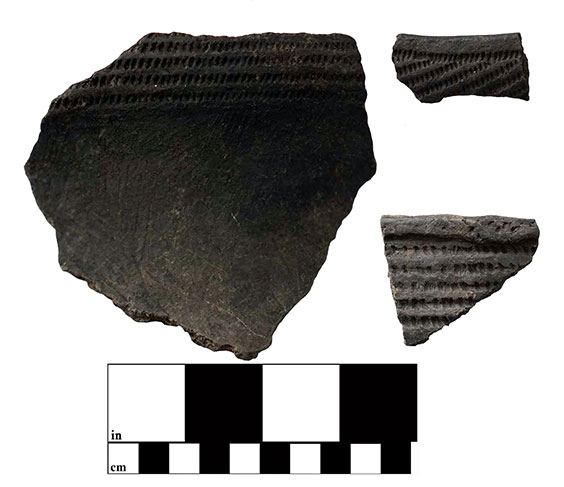
Cord wrapped stick impressed sherds from On-A-Slant Village (83.442.4.1530, 747, 913; photos by David Nix)
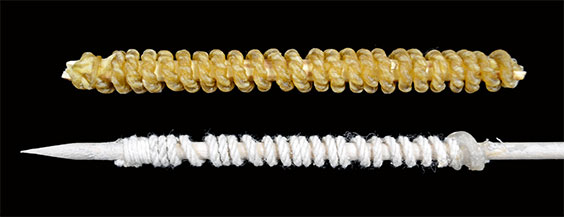
Replica cord-wrapped-stick tools (SHSND AHP educational collection)
I also enjoy the really fancy designs like this one.
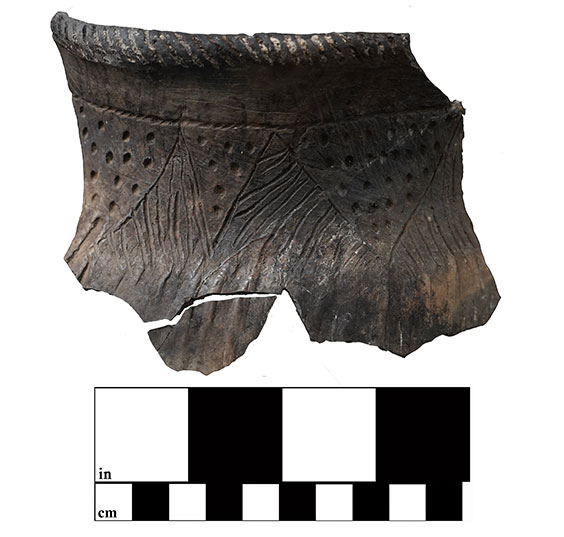
There are many kinds of decoration on this rim sherd from On-A-Slant Village (83.442.4.799; photo by David Nix)
This pot has almost everything—cord impressions along the rim and under the rim along the neck, tool impressions (the round dots), incised lines, and ridges from shaping the pot using simple-stamping (visible along the broken edge of the pot).

